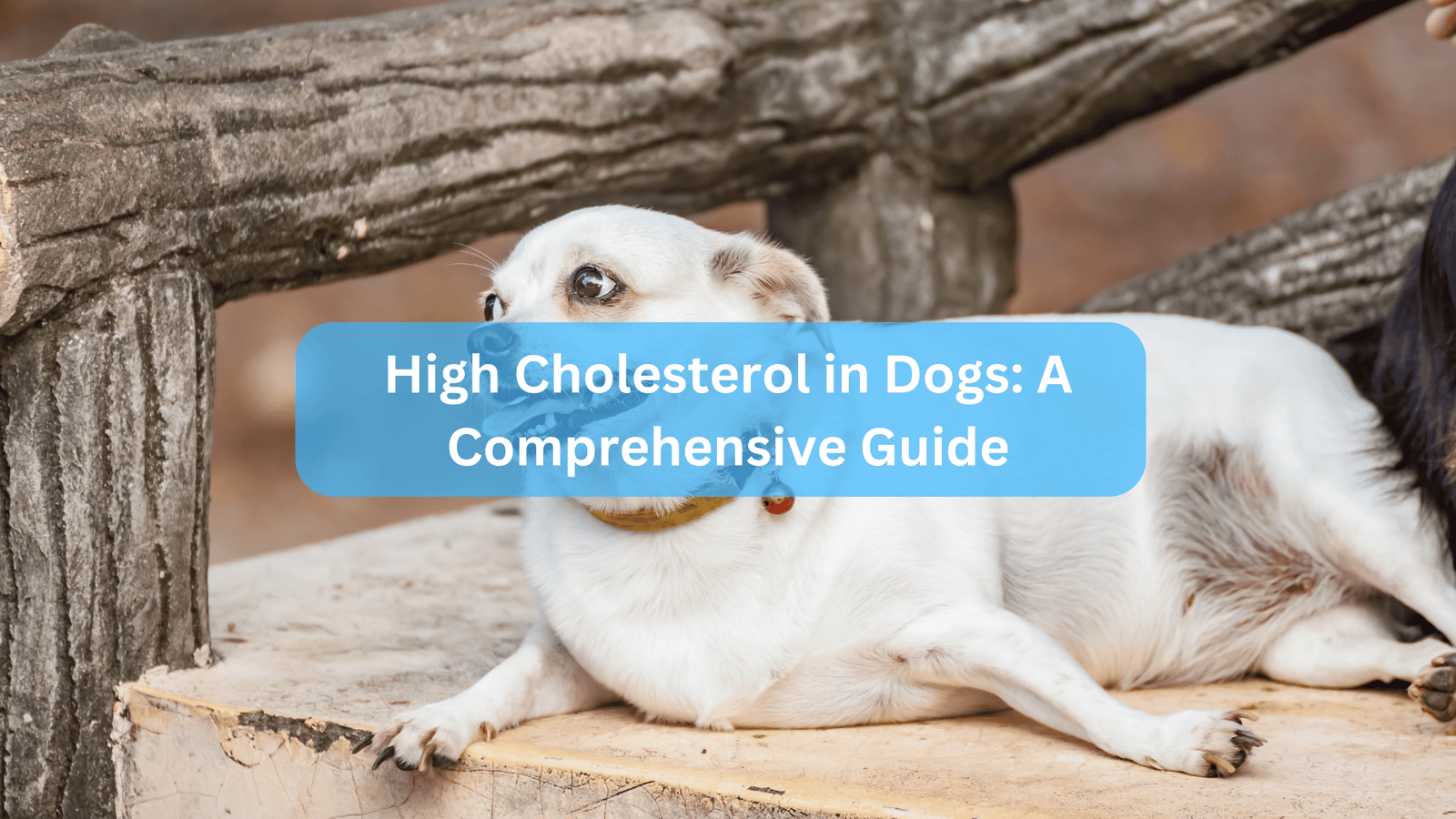High cholesterol in dogs, medically known as hyperlipidemia, is a condition characterized by elevated levels of lipids (fats) in the bloodstream, specifically cholesterol and triglycerides.
While it may not always indicate a serious health issue, understanding its implications, causes, symptoms, diagnosis, and treatment is crucial for maintaining your dog’s health.
What is High Cholesterol?
Hyperlipidemia occurs when there is an excess of lipids in the blood. This condition can manifest as elevated cholesterol, triglycerides, or both.
Cholesterol is a fat-like substance essential for various bodily functions, including hormone production and cell membrane integrity.
However, when cholesterol levels exceed the normal range (120-270 mg/dL for dogs), it can lead to health complications.
Symptoms of High Cholesterol in Dogs
Many dogs with high cholesterol may not exhibit noticeable symptoms, especially with mild to moderate elevations. However, in some cases, the following symptoms may occur:
- Decreased appetite
- Vomiting
- Diarrhea
- Abdominal pain or bloating
- Fatty deposits under the skin
- Cloudy eyes (lipid deposits in the cornea)
- Hair loss and itching
- Seizures (in severe cases)
If you notice any of these symptoms, it is essential to consult a veterinarian for a proper diagnosis.
What Causes High Cholesterol in Dogs
High cholesterol can arise from various factors, including:
- Dietary Factors: A high-fat diet, particularly from table scraps or certain commercial dog foods, can lead to elevated cholesterol levels. Foods that are high in fat, such as fatty meats and dairy products, can contribute to this condition.
- Underlying Health Conditions: Hyperlipidemia is often secondary to other diseases, such as:
- Diabetes mellitus
- Hypothyroidism
- Cushing’s disease (hyperadrenocorticism)
- Pancreatitis
- Protein-losing nephropathy
- Genetic Predisposition: Certain dog breeds are more prone to hyperlipidemia, including Miniature Schnauzers, Beagles, Shetland Sheepdogs, Briards, Rough Collies, and Poodles.
How to Tell if Your Dog’s High Cholesterol is Caused by a Specific Disease
To determine if high cholesterol is linked to a specific disease, veterinarians will typically conduct comprehensive blood tests and physical examinations.
They may look for signs of underlying conditions such as diabetes or hypothyroidism.
If your dog shows symptoms consistent with these diseases, further testing may be warranted to establish a definitive diagnosis.
Diagnosis of High Cholesterol in Dogs

Diagnosing high cholesterol typically involves:
- Physical Examination: A veterinarian will assess your dog’s overall health and look for any visible symptoms.
- Blood Tests: A blood sample is taken to measure lipid levels. It’s crucial to fast your dog for at least 12 hours before testing to avoid temporary spikes in cholesterol due to recent meals.
- Urinalysis: This may be conducted to check for underlying conditions that could be contributing to hyperlipidemia.
If initial tests indicate high lipid levels, further diagnostics may be necessary to identify any underlying health issues.
Treatment of High Cholesterol in Dogs
While high cholesterol cannot be “cured,” it can be effectively managed through lifestyle and dietary changes. Treatment options include:
- Dietary Changes: A low-fat, high-fiber diet is often recommended. Specially formulated dog foods are available, and it’s essential to avoid high-fat treats and table scraps. Gradual dietary changes are advised to prevent gastrointestinal upset.
- Best Low-Fat Dog Foods: Some of the best low-fat dog foods for managing high cholesterol include:
- Hill’s Prescription Diet Metabolic
- Royal Canin Veterinary Diet Satiety Support
- Blue Buffalo Life Protection Formula Healthy Weight
- Wellness CORE Reduced Fat
- Medications: In cases where dietary changes are insufficient, medications may be prescribed. Drugs like Gemfibrozil can help lower triglyceride levels, while statins may be considered in rare cases of high cholesterol without elevated triglycerides. However, human medications should never be given to dogs without veterinary guidance.
- Management of Underlying Conditions: If hyperlipidemia is secondary to another health issue, treating that condition is crucial for resolving elevated lipid levels.
Natural Remedies for Reducing Cholesterol in Dogs
While dietary changes and medications are the primary methods for managing high cholesterol, some natural remedies may help reduce cholesterol levels:
- Fish Oil: Omega-3 fatty acids found in fish oil can help lower triglyceride levels and improve overall heart health.
- Fiber Supplements: Adding fiber to your dog’s diet can help reduce cholesterol absorption.
- Regular Exercise: Encouraging regular physical activity can help maintain a healthy weight and improve lipid profiles.
Monitoring Cholesterol Levels in Dogs.
After treatment, it is essential to monitor your dog’s cholesterol levels regularly. Generally, cholesterol levels should be checked:
- Every 3-6 months: Initially after starting treatment or dietary changes.
- Annually: Once stable levels are achieved.
Also Read: Why Do Dogs Hate the Vet? Understanding Canine Anxiety
Also Read: Can Dogs Eat Brown Sugar? Is brown sugar toxic for dogs?
Conclusion
High cholesterol in dogs, while not always a critical health threat, requires attention to prevent potential complications.
By understanding the causes, symptoms, and treatment options, dog owners can take proactive steps to manage their pet’s health.
Regular veterinary visits, a balanced diet, and appropriate monitoring are key components in ensuring that your furry friend remains healthy and happy.
If you suspect your dog may have high cholesterol, consult your veterinarian for a thorough evaluation and tailored treatment plan.
Sources:
- https://www.petmd.com/dog/conditions/endocrine/high-cholesterol-dogs
- https://www.dutch.com/blogs/dogs/high-cholesterol-in-dogs
- https://wagwalking.com/condition/high-cholesterol
- https://www.dogfoodadvisor.com/best-dog-foods/suggested-low-fat-dog-food/
- https://www.reddit.com/r/DogFood/comments/169x4hb/in_search_of_an_affordable_low_fat_dog_food_for/
- https://www.rover.com/blog/best-low-fat-dog-food/
- https://www.pendervet.com/blog/is-my-dogs-high-cholesterol-cause-for-concern







